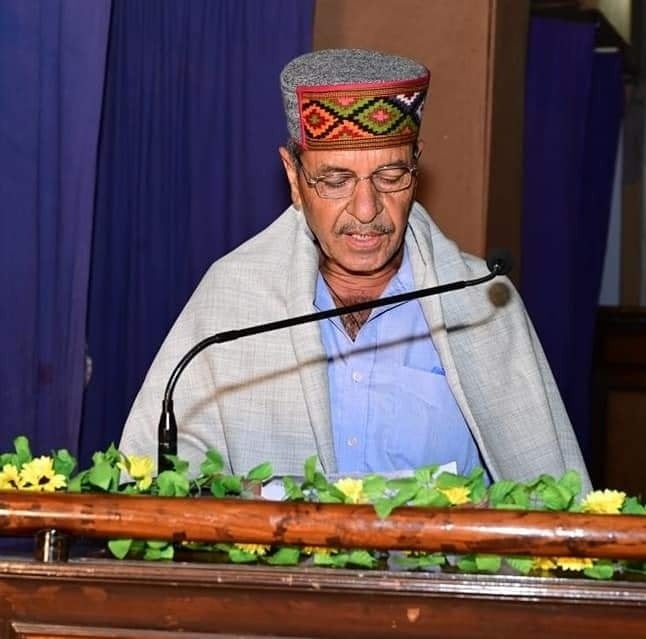Founded in 2012, Go Green Warehouses stands as a trailblazer in integrated commodity management solutions, carrying forward the rich legacy of the Go Green Group, a stalwart in the agro-commodity sector since 1925. With its headquarters in Ahmedabad, the company manages an impressive network of over 1,500 warehouses across 25 states. These facilities offer a robust suite of post-harvest services finely tuned to meet the needs of the agricultural value chain.
Their portfolio includes agri warehousing and logistics, collateral risk management, audit and inspection services, preservation solutions, and storage facilities strategically located near ports. Beyond storage, they excel in procurement and trade facilitation, agri processing and private labelling, and cutting-edge services such as e-retail, third-party logistics (3PL), and premium warehouse leasing.
Driven by a bold mission, Go Green Warehouses aims to revolutionize agribusinesses, enhance stakeholder returns, and streamline the farm-to-fork process. Their vision centers on creating unmatched value for India’s farming community while delivering world-class services across the agricultural spectrum. This relentless pursuit positions India as a global food production and supply leader.
In an exclusive interview with The Interview World, Santosh Kumar Sahu, the Executive Director, Co-founder, and CEO of Go Green Warehouses Pvt. Ltd., shared powerful insights into the company’s transformative journey. He detailed how the organization empowers smallholder farmers by enabling efficient storage solutions and ensuring access to fair market prices. Furthermore, he underlined the pan-India micro-warehouses, emphasized their focus on high-impact commodities, and highlighted collaborative efforts with key stakeholders to amplify their impact.
Key takeaways from this compelling conversation are outlined below.
Q: How is Go Green Warehouses empowering small-holding farmers to store their produce efficiently and secure fair market prices at the right time?
A: At Go Green Warehouses, we are pioneering a transformative approach to rural agri-logistics through our micro warehouses. While our larger warehouses operate in cities and at Mandi and Taluka levels, these micro warehouses target the village level. Here, we identify local entrepreneurs—often traders or individuals from families with a trading background—who already understand the nuances of the market.
This model establishes two critical market linkages. First, we facilitate financing through NBFCs, banks, and trade financiers directly linked to these micro warehouses. Second, we enable seamless market connections by bridging the gap between farmers and a diverse network of buyers, including corporates, processors, importers, exporters, ethanol plants, and distilleries.
Through these linkages, farmers can sell their produce. For instance, once we assess and sample the quality of their produce, we inform buyers about availability via our app. Buyers then review the samples and offer a price, and the farmers can sell any quantity—from a single bag to several hundred bags. Eventually, this eliminates the need for farmers to transport goods to distant Mandis, saving them time and costs.
Our micro warehouses operate as grain banks, offering farmers flexible options to store or sell their produce when prices peak, helping them maximize profits by up to 25-30%. Moreover, we ensure transparent financing through RBI-regulated institutions, shielding farmers from exploitation.
We also assume responsibility for ensuring the stored produce is sold at optimal times. If prices drop unexpectedly, our team provides immediate guidance to minimize losses. Furthermore, with government initiatives like the credit guarantee scheme and hedging options from NCDEX, farmers can access additional safety nets.
Our commitment extends to handholding farmers through the entire process. We guide them on construction, design, and financing for micro warehouses, ensuring they repay loans smoothly. By leasing these warehouses for 5-10 years, we also reduce the initial risks for local entrepreneurs.
This initiative is not just about storage; it’s about creating a robust rural market ecosystem. We envision these micro warehouses becoming sub-yards of APMC, further enhancing farmer benefits. Currently operational in 25 states, this model reflects our mission to empower rural India and transform agricultural logistics from the ground up.
Q: How many micro-warehouses has Go Green Warehouses established so far?
A: To date, we have successfully piloted 100 warehouses. Over the next three years, we plan to expand our warehousing network to 1,500 warehouses across India. These will include larger facilities, ranging from 50,000 sq. ft. to 100,000 sq. ft., and smaller ones. We aim to double this number every year for the next five years.
We are strategically focusing on just one or two key commodities. By linking these warehouses with industrial clusters, we ensure farmers have immediate market access, empowering them to sell their produce quickly and efficiently.
Q: What are the key commodities that you are currently focusing on?
A: Currently, we focus on dry commodities, not perishables. We are working with crops like maize, wheat, paddy, and makhana, which we have recently introduced in Bihar. We also target commercial crops where farmers can increase their margins by 30-40%. Once a few farmers experience these higher margins, others will follow suit. This is the core idea behind our approach.
Q: Is your organization receiving government support for these initiatives, or are you solely relying on collaborations with private entities?
A: This initiative is fundamentally a collaboration. However, the government is playing a crucial role by introducing a series of policies to support its success. Recently, the government announced plans to establish the largest grain storage infrastructure, with a warehouse to be built in every village under the PECs. This move will provide the necessary foundation to enable such initiatives. We can leverage these warehouses to support PECs, as they can’t handle essential services like scientific warehousing, quality testing, and inward-outward marketing.
Services from providers like us will be critical at this stage. If the government focuses on developing the infrastructure, it will ease our operations significantly. Capital remains a major concern; without consistent utilization of warehouses, sustaining operations becomes impossible. This initiative, as envisioned by the government, has the potential to generate positive outcomes.
Q: Is Go Green Warehouses aligning its operations with the One District One Product (ODOP) policy?
A: We have served as a CBBO and have onboarded five PEOs. Over time, we have evolved into a fully developed CBBO, with plans to expand to 50. However, the key to growth lies in dealing with bulk commodities. Operating across multiple locations becomes challenging unless the commodity is of significant volume. For instance, with five, six, or seven racks, we can attract major buyers like Cargill and Olam. Without that scale, our operations are limited to just a few trucks.
Therefore, our focus is on bulk commodities in every district, with an emphasis on exporters. Exporting offers higher profit margins, which is why we aim to reduce intermediaries in the process, creating a more streamlined network, or what we call a “grain bank.” We do not handle training or financing ourselves. Instead, we are building a platform similar to Amazon, where financiers, traders, and warehouse owners can collaborate and operate efficiently.









